Study on the Preparation of Biochar Ceramsite Based on Sewage Sludge and the Characterization of Its Properties
Abstract
:Featured Application
Abstract
1. Introduction
2. Materials and Methods
2.1. Materials and Reagents
2.2. Experimental Methods
2.2.1. Partial Indexes of Sludge
2.2.2. Preparation of Ceramsite Biochar
2.2.3. Ceramsite Performance Test
2.2.4. Mineral Composition and Microscopic Morphology
2.2.5. Adsorption Experiment
3. Results and Discussion
3.1. Main Characteristics of Residual Sludge
3.2. Main Performance Characteristics of Ceramsite
3.3. Dissolution of Heavy Metals
3.4. XRD Phase Analysis
3.5. SEM
3.6. Adsorption Experiments
3.6.1. Influence of pH on Adsorption
3.6.2. Adsorption Isotherm
3.6.3. Adsorption Kinetics
4. Conclusions
- (1)
- BET, compressive strength, and toxic leaching tests show that the prepared ceramsite has larger specific surface area and better compressive strength without additional auxiliary materials. The leaching amount of toxic heavy metals is low when the temperature is higher than 650 °C.
- (2)
- According to SEM, with the increase of calcining temperature, the volatile substances in the sludge begin to volatilize, the sludge starts to expand, and the pores begin to increase. When the temperature rises to 650 °C, the volatile components are completely consumed, and the specific surface area should be the maximum. When the temperature rises to 950 °C, part of the material begins to melt. Although the porosity is high, the micropores have been blocked, so the specific surface area decreases.
- (3)
- According to XRD, the main component of sludge is quartz, with a small amount of kaolin and mica, which can prepare high-strength ceramsite. Calcination converts the weak crystalline iron minerals to hematite.
- (4)
- The large amount of iron and aluminum in the sludge is the main reason for its good adsorption effect. According to the adsorption performance test of Cr(VI), the adsorption effect of ceramsite on Cr(VI) is well at low pH, and the adsorption isotherm fits well with Langmuir and Freundlich types. The adsorption process has both monolayer adsorption and multilayer adsorption, and the adsorption process conforms to the pseudo-second-order kinetics.
Author Contributions
Funding
Institutional Review Board Statement
Informed Consent Statement
Data Availability Statement
Acknowledgments
Conflicts of Interest
References
- Liu, G.H.; Chen, J.H.; Wang, Y.Y.; Qi, L.; Wang, H.C. Study on advanced treatment of organic matter in effluent by modified sludge based adsorbent. Acta Sci. Circumstantiae 2020, 40, 1196–1203. [Google Scholar]
- Rong, H.; Zhang, H.F.; Zhang, L.; Zhang, Y.; Xu, R.; Ning, C.Z.; Wang, X.P. Effect of paper mill sludge content on the characteristics of sludge ceramsite. Bull. Chin. Ceram. Soc. 2019, 38, 2972–2978. [Google Scholar]
- Lee, T.C.; Lin, K.L.; Su, X.W.; Lin, K.K. Recycling CMP sludge as a resource in concrete. Constr. Build. Mater. 2012, 30, 243–251. [Google Scholar] [CrossRef]
- Shang, J.J. Research on the preparation method of activated carbon from sludge coal ash and activated carbon’s adsorption property. Adhesion 2019, 40, 61–65. [Google Scholar]
- Zhuang, X.; Xu, R.F.; Luo, W.K.; Cai, F.S.; Li, F.Q. Heavy metal emission characteristics and risks in the co-combustion of sludge sewage and municipal solid waste. Ecol. Environ. Sci. 2020, 29, 199–206. [Google Scholar]
- Liu, Q.D. Study on applicability of sludge thermal hydrolysis technology in municipal sludge treatment in Suzhou area. Tianjin Sci. Technol. 2019, 46, 63–65. [Google Scholar]
- Wang, Z.L.; Xue, Q.; Lin, Z.Z.; Liu, Y.L. Research progress of patent application for preparation of ceramsite from solid waste. Appl. Chem. Ind. 2018, 47, 2455–2458. [Google Scholar]
- Zhang, T.G.; Liu, Y.H.; Wang, N. Research progress on sludge reduction technology and mechanism in wastewater treatment. Technol. Water Treat. 2020, 46, 6–12. [Google Scholar]
- Dyer, T.D.; Halliday, J.E.; Dhir, R.K. Hydration chemistry of sewage sludge ash used as a cement component. J. Mater. Civ. Eng. 2011, 23, 648–655. [Google Scholar] [CrossRef]
- Shu, W.; Peng, L.Y.; Cheng, X.B.; Li, J.Q.; Huang, J. Feasibility study and effectiveness analysis on brick-making with sewage sludge incineration ash. Water Purif. Technol. 2011, 30, 84–87. [Google Scholar]
- Zhang, J.J. Study on stabilization and solidification of heavy metal in chromium-based electroplating sludge. Environ. Protect. Sci. Technol. 2019, 25, 1–5. [Google Scholar]
- Wu, C.N.; Zhang, X.F.; Ling, Q.; Wang, L.; Tang, Y.C.; Tao, Y.; Xu, L.; Xu, C.; Huang, Z. Study on preparation and adsorption performance of sludge activated carbon. Appl. Chem. Ind. 2015, 44, 1–3. [Google Scholar]
- Zhao, Y.Q.; Yang, Y.Z.; Babatunde, A.; Zhang, X.H.; Hu, Y.S.; Kumar, L.; Liu, R.B. Overview of development of alum sludge-based constructed wetland for wastewater treatment. China Water Wastewater 2015, 31, 124–130. [Google Scholar]
- Xi, D.G.; Zhang, R.B.; Zhou, N.; Chen, F.; Zu, B.Y.; Wang, L.Y. Characteristics of aluminum sludge composite filler and its application in constructed wetlands. J. Environ. Eng. Technol. 2019, 9, 552–558. [Google Scholar]
- Zheng, Y.Y.; Lin, Z.L.; Li, Y.; Zhao, Y.C.; Liu, C.Q. Ceramsite from waterworks sludge as media in constructed wetlands for treatment of municipal sewage. China Water Wastewater 2016, 32, 112–115. [Google Scholar]
- Ouyang, G.L.; Zhou, Y.X.; Qi, T.; Zhang, Z.G. Discussion on the construction of circulating biochar assisted phytoremediation constructed wetland for the treatment of heavy metal pollution in Sanxiang watershed. Low Carbon World 2017, 6, 32–34. [Google Scholar]
- Liang, N. Application research progress of feed water sludge in water treatment. Technol. Dev. Chem. Ind. 2019, 48, 58–60. [Google Scholar]
- Liu, C.; Yang, Y.Z.; Wan, N. Characteristic and mechanisms of chromium (VI) adsorption on alum sludge. Chin. J. Environ. Eng. 2013, 7, 97–102. [Google Scholar]
- Gao, J.Q.; Yang, L.; Zhong, R.; Chen, Y.; Zhang, J.S.; Gao, J.L.; Cai, M.; Zhang, J.L. Comparison of nitrogen and phosphorus removal efficiency between two types of baffled vertical flow constructed wetlands planted with Oenanthe Javanica. Water Sci. Technol. 2020, 81, 1–10. [Google Scholar] [CrossRef]
- He, B.Q. Zero electric point and isoelectric point of oxidized ore and its determination method. Nonferrous Met. 1983, 1, 17–23. [Google Scholar]
- Ni, C.Y.; Liu, S.; Cui, L.J.; Han, Z.; Wang, L.; Chen, R.F.; Liu, H. Adsorption performance of Cr (VI) onto Al-free and Al-substituted ferrihydrite. RSC Adv. 2016, 6, 66412–66419. [Google Scholar] [CrossRef]
- Wang, Y.; Yang, J.H.; Xu, H.; Liu, C.; Hu, K. Preparation of ceramsite based on waterworks sludge and its application as matrix in constructed wetlands. Int. J. Environ. Res. Public Health 2019, 16, 2637. [Google Scholar] [CrossRef] [PubMed] [Green Version]
- Teixeira, S.R.; Santos, G.T.A.; Souza, A.E.; Alessio, P.; Souza, S.A.; Souza, N.R. The effect of incorporation of a Brazilian water treatment plant sludge on the properties of ceramic materials. Appl. Clay Sci. 2011, 53, 561–565. [Google Scholar] [CrossRef]
- Wu, S.; Qi, Y.; Yue, Q.; Gao, B.; Gao, Y.; Fan, C.; He, S. Preparation of ceramic filler from reusing sewage sludge and application in biological aerated filter for soy protein secondary wastewater treatment. J. Hazard. Mater. 2015, 283, 608–616. [Google Scholar] [CrossRef] [PubMed]
- Li, Y.; Dong, D.M.; Yang, F.; Zheng, N.; Jin, Q.H. Chemical species of Fe and Mn oxides in natural surface coatings. J. Jilin Univ. 2003, 3, 374–377. [Google Scholar]
- Huang, L.Q. Discussion on groundwater purification of iron, manganese and sulfur in mines. Met. Min. 1988, 3, 49–52. [Google Scholar]
- Li, P.; Guan, X.J.; Li, C.D. Experimental investigation on ferrihydrite promotes the purification of slightly polluted source water containing arsenic by wetland plants. Sci. Technol. Eng. 2018, 18, 290–293. [Google Scholar]
- Luo, H.L.; Tang, J.; Zhou, P.X.; Yu, Z.; Fu, G.H.; Zhou, S.G. Influence of secondary iron-oxide mineralization induced by dissimilatory iron reduction bacteria on fraction transformation of heavy metals in soil. Chi. J. Ecol. 2018, 37, 1620–1627. [Google Scholar]
- Wu, S.; Yue, Q.; Qi, Y.; Gao, B.; Han, S.; Yue, M. Preparation of ultra-lightweight sludge ceramics (ULSC) and application for pharmaceutical advanced wastewater treatment in a biological aerobic filter (BAF). Bioresour. Technol. 2011, 102, 2296–2300. [Google Scholar] [CrossRef]
- Liu, J.; Zhu, R.L.; Xu, T.Y.; Lai, P.M.; Zhu, Y.; Zhou, Q.; Zu, J.; He, H. Interaction of polyhydroxy fullerenes with ferrihydrite: Adsorption and aggregation. J. Environ. Sci. 2018, 64, 1–9. [Google Scholar] [CrossRef]
- Zhang, Y.Y.; Ai, C.Q.; Du, Y.F.; Ma, X.D.; Wang, W. Study on activation-modification of silicon carbide porous ceramics and its adsorption of Pb(II). China Ceram. 2019, 4, 18–24. [Google Scholar]
- Ozacar, M.; Sengil, I.A. Adsorption of reactive dyes on calcined alunite from aqueous solutions. J. Hazard. Mater. 2003, 98, 211–224. [Google Scholar] [CrossRef]
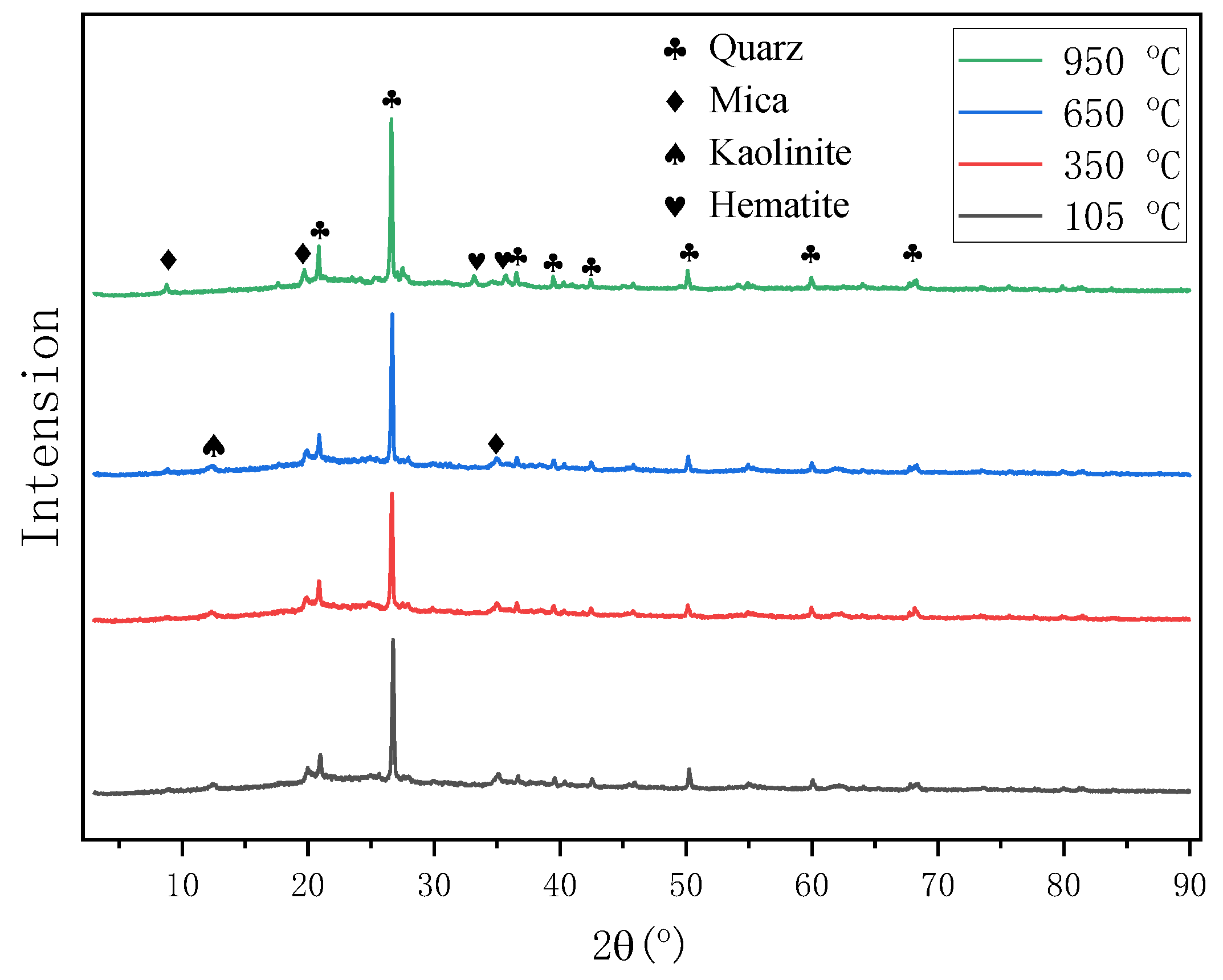
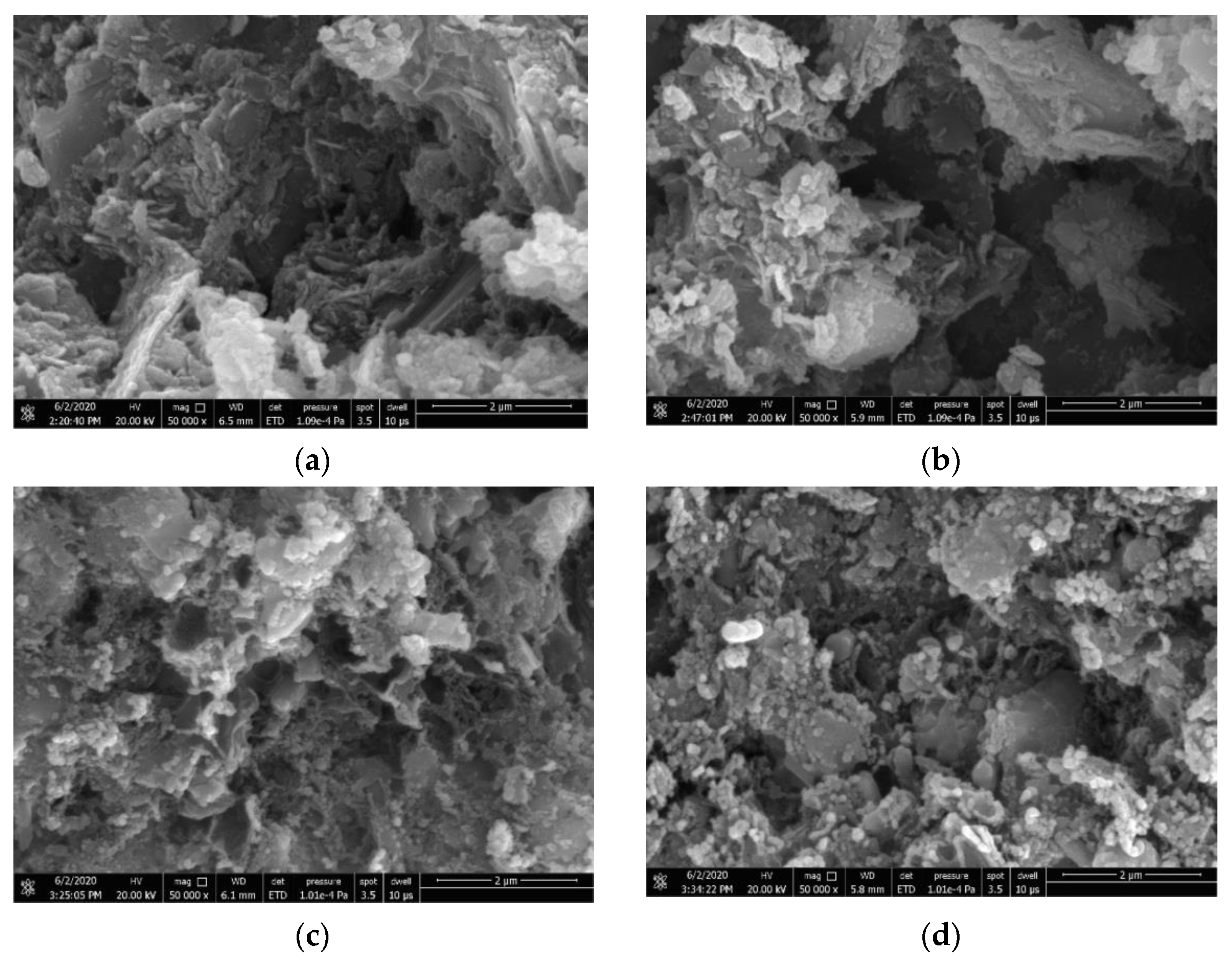
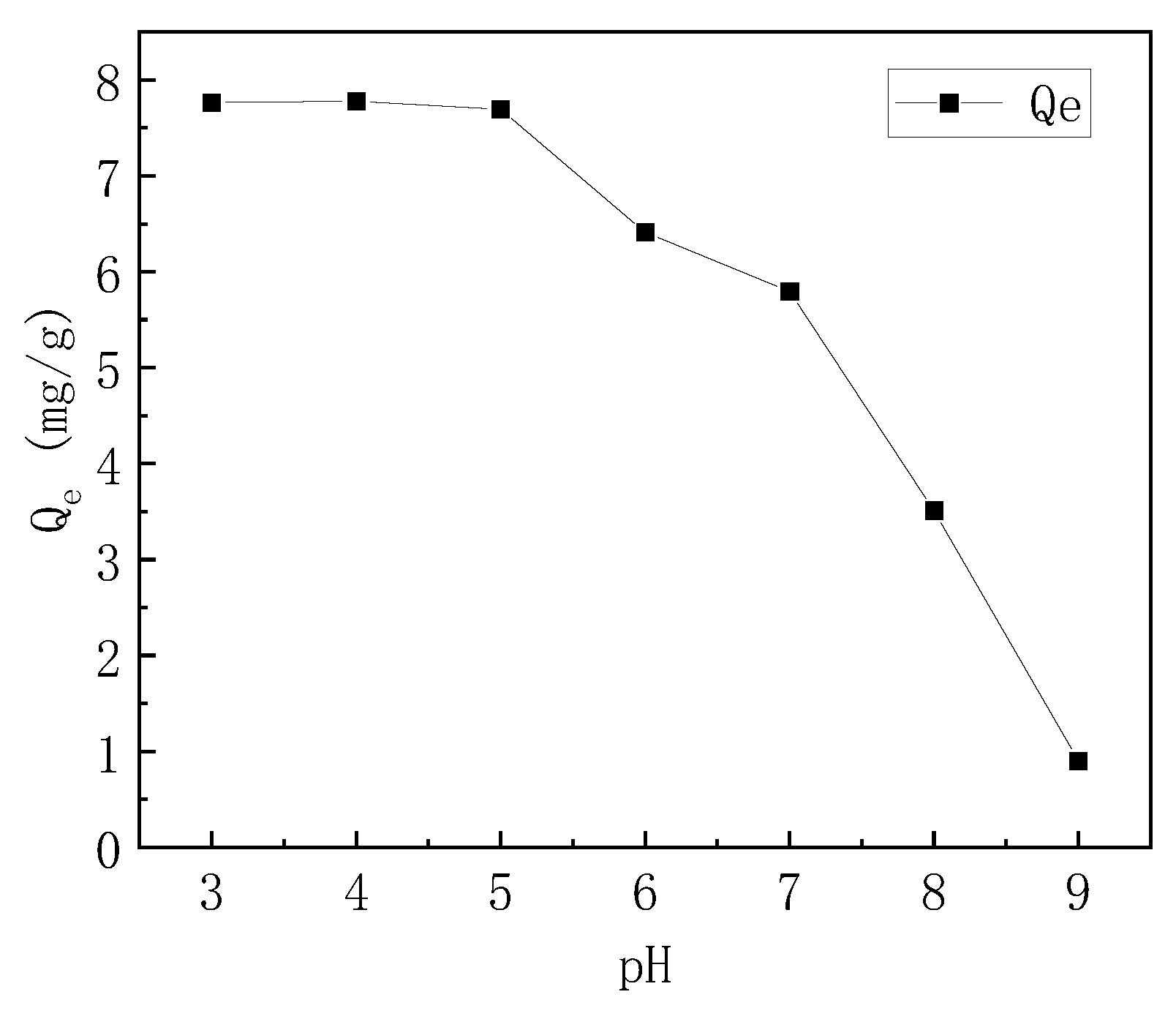
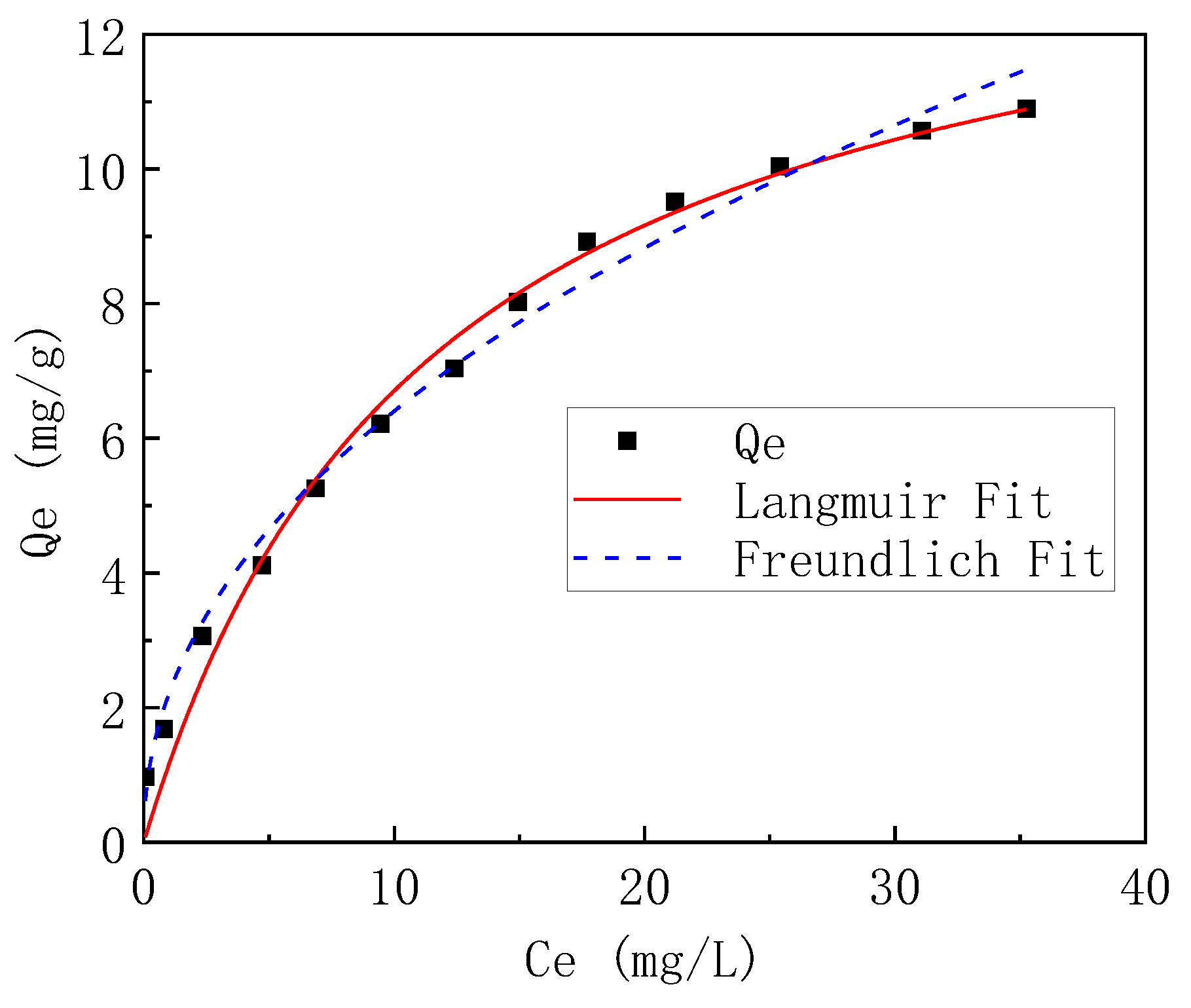
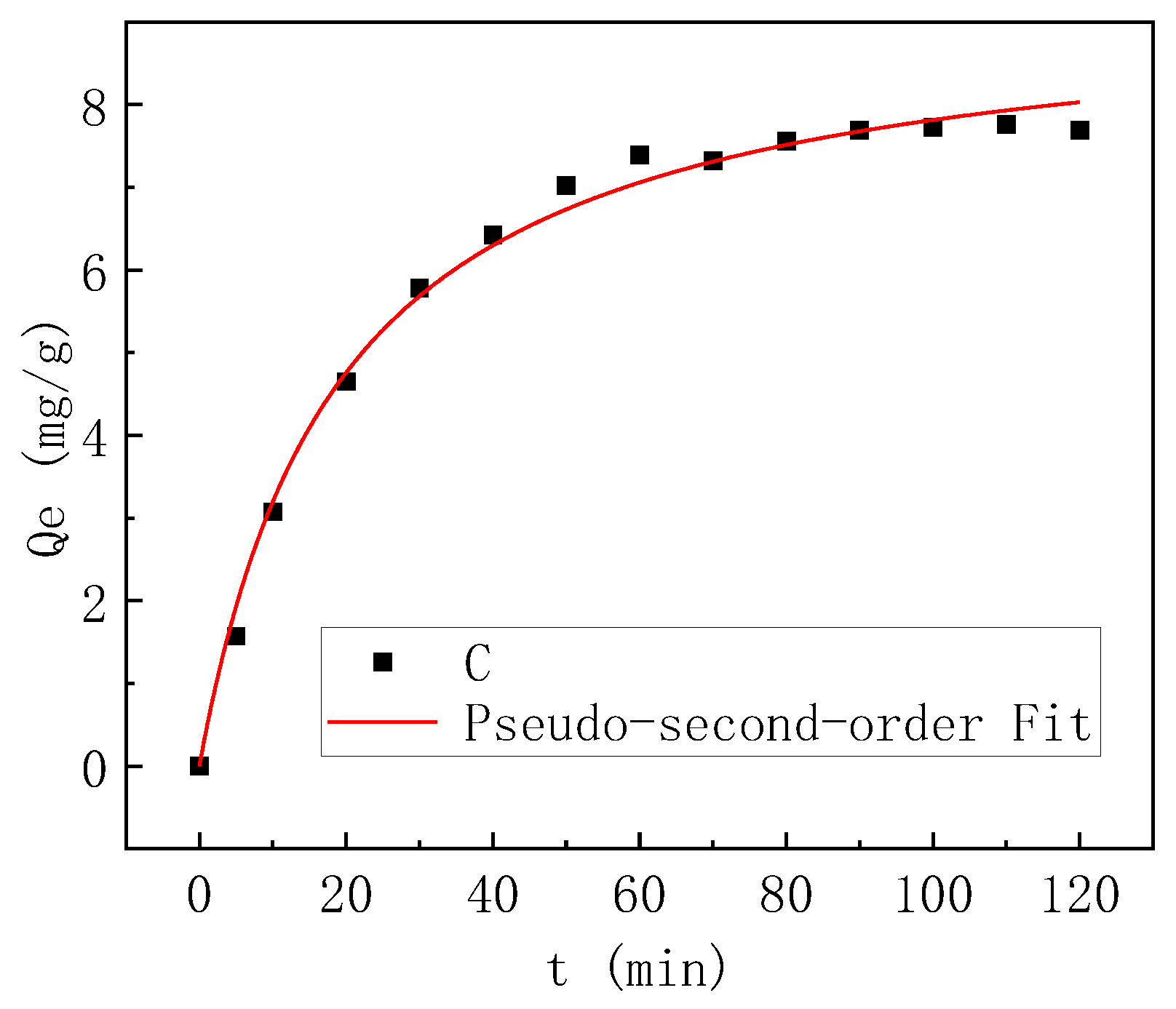
| pH | Moisture Content (%) | Loss on Ignition (%) | Ash Content | Percentage of Contraction (%) | |
|---|---|---|---|---|---|
| Wet→Dry | Dry→Product | ||||
| 6.78 ± 0.12 | 76.7 ± 1.4 | 25.7 ± 0.9 | 74.3 ± 0.9 | 50.7 ± 0.5 | 2.5–11.3 ± 0.2 |
| Elements | Content | Elements | Content |
|---|---|---|---|
| Fe | 1612.8 ± 8.7 | Ni | 79.3 ± 1.7 |
| Al | 3143.5 ± 10.2 | Cr | 187.6 ± 0.9 |
| Zn | 937.7 ± 5.8 | Cd | 21.7 ± 0.5 |
| Cu | 134.3 ± 2.3 | Pb | 52.2 ± 0.2 |
| Firing Temperature (°C) | Porosity (%) | BET (m2/g) | Compressive Strength (MPa) | Point Zero Charge (pHpzc) * |
|---|---|---|---|---|
| 105 | - | 201.1729 ± 10.3 | 11.33 ± 1.14 | 6.77 ± 0.11 |
| 350 | 6.3 ± 0.2 | 186.2960 ± 8.7 | 6.77 ± 1.10 | 6.21 ± 0.05 |
| 650 | 7.9 ± 0.2 | 401.7924 | 8.25 ± 0.83 | 5.34 ± 0.03 |
| 950 | 12.7 ± 0.3 | 292.6853 | 10.77 ± 0.55 | 8.12 ± 0.03 |
| Fe (±0.005) * | Zn (±0.005) | Cu (±0.002) | Ni (±0.002) | Pb (±0.002) | Cr (±0.002) | Cd (±0.002) | |
|---|---|---|---|---|---|---|---|
| 105 °C | 0.081 | 0.065 | 0.009 | 0.023 | 0.009 | 0.012 | 0.005 |
| 350 °C | 0.098 | 0.089 | 0.010 | 0.029 | 0.009 | 0.008 | 0.003 |
| 650 °C | 0.026 | 0.021 | 0.005 | 0.007 | 0.001 | 0.001 | 0.001 |
| 950 °C | 0.015 | 0.007 | 0.003 | 0.00 | 0.003 | 0.001 | 0.001 |
| Langmuir | Freundlich | ||||
|---|---|---|---|---|---|
| b | Qmax | R2 | k | n | R2 |
| 0.0866 | 14.45 | 0.9832 | 2.20 | 2.16 | 0.9881 |
Publisher’s Note: MDPI stays neutral with regard to jurisdictional claims in published maps and institutional affiliations. |
© 2021 by the authors. Licensee MDPI, Basel, Switzerland. This article is an open access article distributed under the terms and conditions of the Creative Commons Attribution (CC BY) license (https://creativecommons.org/licenses/by/4.0/).
Share and Cite
Liang, C.; Lin, S.; Liu, G. Study on the Preparation of Biochar Ceramsite Based on Sewage Sludge and the Characterization of Its Properties. Appl. Sci. 2021, 11, 5522. https://doi.org/10.3390/app11125522
Liang C, Lin S, Liu G. Study on the Preparation of Biochar Ceramsite Based on Sewage Sludge and the Characterization of Its Properties. Applied Sciences. 2021; 11(12):5522. https://doi.org/10.3390/app11125522
Chicago/Turabian StyleLiang, Changjin, Shaomin Lin, and Guiwen Liu. 2021. "Study on the Preparation of Biochar Ceramsite Based on Sewage Sludge and the Characterization of Its Properties" Applied Sciences 11, no. 12: 5522. https://doi.org/10.3390/app11125522





